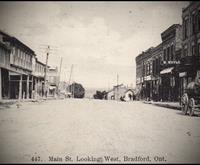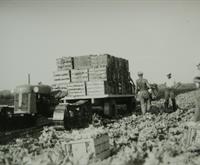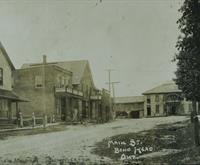At the Town of BWG we strive to celebrate our history and preserve our heritage. History is our story - the events that created our community and led us to where we are today. Heritage is our legacy from the past - what we live with today and what we pass on to future generations.
Bradford West Gwillimbury was incorporated as a Town in 1991. It is comprised of the former Town of Bradford, most of the lands of the former Township of West Gwillimbury and a small portion of land from the Township of Tecumseth. Today it includes the communities of Bradford, Bond Head, Coulson's Hill, Deerhurst, Dunkerron, Green Valley, Newton Robinson and Pinkerton.
Today, the Town of Bradford West Gwillimbury offers a return to the small town charm and a sense of community long lost in larger urban centres. We are a vibrant, thriving community of 42,000+ who possess a sense of pride and community spirit prevails. Our town is characterized by local initiatives and a commitment to be a complete and healthy community where there are opportunities for everyone to contribute and to benefit.
The Village of Bradford
Incorporated in 1857, the Village of Bradford was named after Bradford, England. It was almost completely destroyed by fire in 1871, but it was rebuilt quickly and it became the major centre for the area with a population of 2,000 by 1873. The main economic activity of the area was agriculture, but several sawmills also operated in the area. Grain was the main crop, with growing interest in hay cut from the Holland Marsh area, which was used for stuffing mattresses.


The Holland Marsh
The Holland Marsh is comprised of 2,900 ha of organic (muck) soil. In the early 1930s, 18 Dutch families came to the marsh and formed the nucleus of an expanding and prosperous agricultural community. A row of houses was built for residents of the Holland Marsh's first year-round settlement, forming the village of Ansnorveld (now part of King Township). After World War II, more immigrants from Europe and Asia settled in this area.
The marsh today is a market garden for the Ontario and foreign markets, producing carrots and onions in particular, as well as lettuce, potatoes, celery, parsnips, cabbage, cauliflower and beets. There are some greenhouses in which tomatoes, cucumbers and commercial flowers are produced. The marsh is known as "The Heart of Canada Vegetable Industry."
The Hamlet of Bond Head
The hamlet of Bond Head is located west of highway 400 and at the intersection of County Roads 27 and 88. The name was chosen to honour Sir Francis Bond Head (1839-1919) who was a soldier in the British Army, world traveller, prolific author and Lieutenant-Governor of Upper Canada. Two other notable people from Bond Head are Sir William Osler "the father of modern medicine" and Sir William Mulock, a lawyer, businessman, farmer, politician, judge and philanthropist.
Bond Head is considered one of the oldest hamlets in Simcoe County, celebrating its 175th anniversary in 2012. Its recorded history dates back to the 1820s, with early settlers arriving from Ireland and Britain. It provided a robust style of life, providing the services of blacksmiths, harness makers, wagon makers, stores, inns, mills and churches. Also, it boasted of having many organizations and clubs to provide residents with entertainment and activities. Old Plank Road connected Bond Head to Bradford, and in 1851 it became the first surfaced road in the County. Bond Head currently boasts more than 40 buildings over 100 years old, and several over 150 years old. Many are still in use and in excellent condition.

Contact Us





